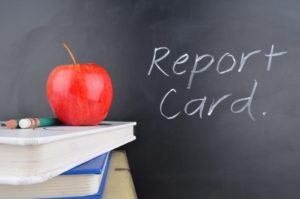Top 10 Risks of Charter School Bond Defaults – #3 Poor Academic Performance
School Improvement Partnership is highlighting the causes or triggers of defaults on municipal high yield charter school bonds in a weekly series entitled THE TOP TEN TRIGGERS OF CHARTER SCHOOL BOND DEFAULTS. In case you missed it, Risk # 10 was School Safety; Risk # 9, Construction Risk; Risk # 8, Shifting State Support for Charter Schools; Risk # 7, School Leadership, Risk # 6: Poor Management, Risk #5: Student Retention; Risk #4: Authorizer Relations
The 3rd Most Common Trigger: Poor Academic Performance
Noting that solid data justifies the expansion of the “best” charter schools, David Osborne of the Progressive Policy Institute wrote in the Wall Street Journal this week, “Graduation rates, college-going rates and college completion rates are … higher among students who enroll in charter schools.”[1] Studies touting or criticizing academic performance at charter schools agree on one thing: there are some with poor academic performance. A charter school bond investor may feel insulated from this risk when the Limited Offering Memorandum for the bonds details historically strong academic performance the day the bonds are purchased. However, charter school bonds have a 35-year maturity, and academic performance can change over time. If it changes for the worse, students and their families may leave, causing revenues to decline and the charter authorizer may take notice, creating the risk of charter non-renewal or revocation. Academic performance is a leading indicator for the financial decline of charter school bonds, as are housing starts or credit card transactions for the economy writ large. The challenge for charter school bond investors related to the risk of poor academic performance is: 1) how to measure it; 2) what to compare it to; and 3) what to do about it?
How Academic Performance Is Measured. There seemed to be a clear roadmap for academic performance in the days of No Child Left Behind (“NCLB”) adopted in 2002. NCLF was designed with a to provide a federal academic performance standard of Annual Year Progress (“AYP”) based on yearly standardized testing. For a time, charter schools and their bond investors could easily benchmark academic progress by simply asking, “Did the school make AYP?” gave a benchmark for academic performance. However, 40 states and the District of Columbia received waivers from NCLB’s requirements, with authorization to set their own academic performance metrics. When the Every Student Succeeds Act (“ESSA”) replaced NCLB in 2015, states were authorized to decide the education plans for their public schools within a framework provided by the federal government. So how can a charter school investor keep track of academic performance at its portfolio charter schools when each state board of education – or each authorizer in some states – has its own academic performance metrics? The only way is reliable continuing disclosure reporting. If the investor does not have the resources to track the academic performance for its portfolio on its own, it should protect its investment by engaging a skilled continuing disclosure agent. At School Improvement Partnership, we analyze academic data from the applicable State Department of Education, facilitating an “apples-to-apples” comparison.

Compared to What? To determine whether academic performance is declining, what should the State Department of Education academic performance results for a charter school be compared to? Statewide averages? Averages in the surrounding school district? Since a charter school or a traditional district school often takes most of its students from the surrounding neighborhood, one valuable comparison can be viewing academic results compared to those of neighboring charter schools and traditional district schools since all draw from the same pool of students. Even more enlightening can be a comparison of the charter school’s academic performance over time. Consistent declines can serve as a red flag for investors. For example, a three-year decline in academic performance led to the bond default and closing in 2014 of Gaudior Academy where the Michigan Department of Education ranking (1% to 100%) went from 8% to 5% to 1%.
What To Do About It? Since charter schools and their supporters emphasize accountability, why wouldn’t the authorizer simply close the charter school upon the onset of academic challenges and simply relocate the students to other schools? Must be a “bad school”, after all. In actuality, many charter school bond investors have found that targeted additional resources can positively impact the academic success of seemingly “bad schools”. In some cases, a new Director of Instruction, curriculum or teacher support plan is enough to change the trajectory of academic performance. Arthur Mitchell of School Improvement Partnership turned to a number of these strategies when supporting a Detroit charter school which emerged from the bottom 5% of Michigan’s schools with his help. Bringing in new academic leadership and supports can ensure that declining academic performance is remedied, and the value of the charter school bond is restored. Closing a low-performing charter school in the name of accountability can unnecessarily punish the students, the families and the bond investors who funded the school.
Conclusion. Based on School Improvement Partnership’s review of all charter school bond defaults, academic performance is the third leading trigger of defaults. To gauge this trigger, it is important to ensure that there is are consistent measures of academic performance and that the results are compared to the appropriate cohort with similar students. If poor academic performance arises for a charter school in your portfolio, it is critical to have the information you need to understand what needs to change in the school, whether it be changing academic leadership, or implementing an academic leadership support plan, or a new curriculum. Being in the position to tweak what is not working (during the probation period usually granted by the authorizer) may prove more beneficial than simply foreclosing and then seeing what you can get for an empty school building. The outcome will be better for your portfolio, the students and their families who chose that charter school.
[1] “The Big Lie About Charter Schools”, Osborne, David, Op Ed, The Wall Street Journal, November 20, 3019, p. A17



